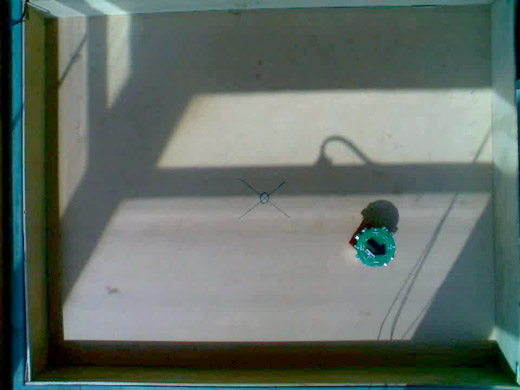Reading University Neural Animat Project
About the collaboration
An ESPRC funded collaboration between the department of Pharmacy and the department of Systems Engineering, Reading University and Material Beliefs project.
Collaborators: Elio Caccavale, Mark Hammond, Dimitris Xydas, Julia Downes, Ben Whalley, Victor Becerra, Slawomir Jaroslaw Nasuto, Kevin Warwick
Above: Ben, Elio, Dimitris and Julia talk about poterntial appplications for product linked to a culture of cortical cells, see Steve Jackman's short film of this meeting.
What is Animat?
The neurally controlled animat consists of a culture of cortical cells which are embodied enabling them to interact with the real world via a robot which acts as the artificial body of the 'brain'.
The neurally controlled animat is a new paradigm which aims to address two of the major difficulties in neuroscience; firstly that one must interfere with a network in order to record from it and secondly the neuroscientist is generally limited to stimuli unlike those that the brain would usually receive.
Under this paradigm cells form connections and develop in the presence of sensory input from the robot (sonar sensors) and on a substrate which allows recording without further interference or damage to the network. The signals from the cells are then used to control the robot therefore creating a relationship between the input the cells receive, their activity and the future input that results and hence the culture is able to interact with its environment.
This facilitates the study of the connections that develop in relation between the sensory input of the robot and the behaviour produced, furthering the understanding of how networks of neurones work together to create behaviour. The knowledge gained from such research is of importance in addressing neurological disorders and interfacing technology with the human nervous system both from clinical and long-term human adaptations aspects.
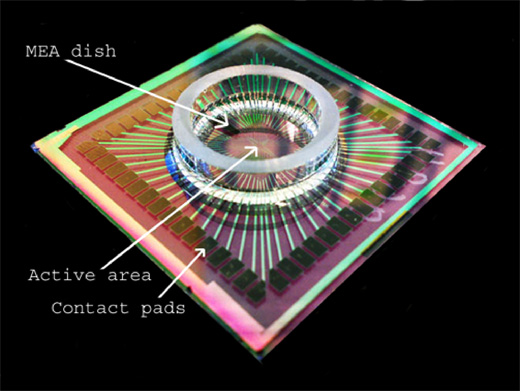
Above: Cells settle on the bottom of the Multi Electrode Array (MEA) and form connections to each other. Electrodes embedded in to the substrate allow unobtrusive recording of the electrical signals produced by the cells.
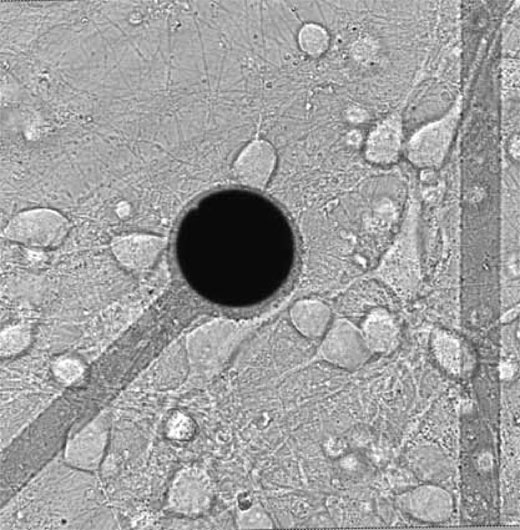
Above: Cells (irregular shapes) grow on an MEA dish with a carpet of connections between them. Recording of electrical activity is undertaken through the electrodes (large black circle).
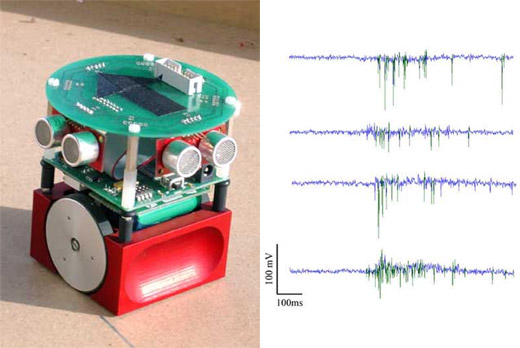
Above left: The robot which acts as the cultured neural networks body. It is equipped with sonar and light sensors which act as the culture's sensory input whilst the culture's output controls the wheel speed and direction.
Above right: Typical electrical signal detected at an electrode, vertical deflections indicate cells firing action potentials as they process input.
Above: See a film of the robot here
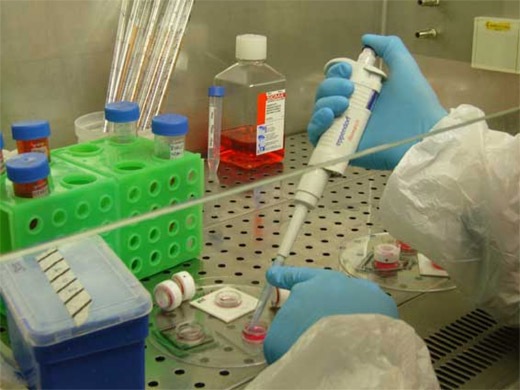
Above: Cultured neural networks living in MEAs are fed in a sterile environment before replacing potter rings (white rings) which seal the cells from environmental influences.
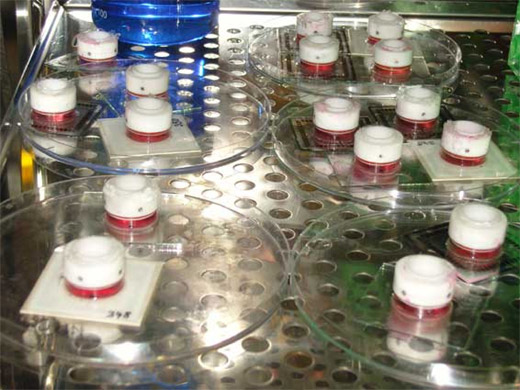
Above: MEAs contained cultured neural networks and sealed from the environment by potter rings are stored in a warm humid incubator whilst not being recorded.
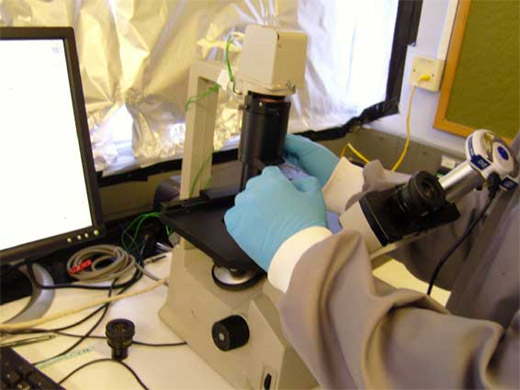
Above: Cultured neural networks are inspected under the microscope.
Out of the lab
The cultural issues associated with interfacing humans directly with technology was addressed at a Dana Centre (Science museum) event in which a short presentation was given followed by a brain storming session with the public.
- You can download a powerpoint from the Animat presentation here
- See a film of the robot here.
- YouTube film of the Dana event shot by Katherine Smith
- Dana Film by Steve Jackman (cue to animat session here).
- Reading lab demo, a film by Steve Jackman.

